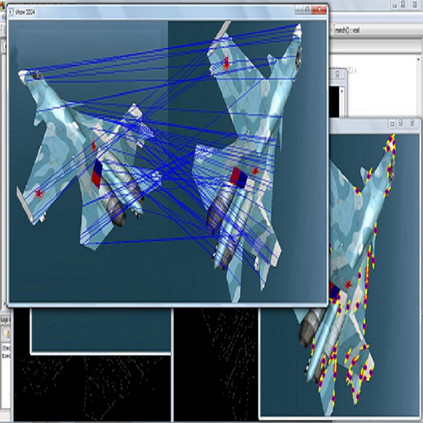Recent deep learning-based methods for medical image registration achieve results that are competitive with conventional optimization algorithms at reduced run times. However, deep neural networks generally require plenty of labeled training data and are vulnerable to domain shifts between training and test data. While typical intensity shifts can be mitigated by keypoint-based registration, these methods still suffer from geometric domain shifts, for instance, due to different fields of view. As a remedy, in this work, we present a novel approach to geometric domain adaptation for image registration, adapting a model from a labeled source to an unlabeled target domain. We build on a keypoint-based registration model, combining graph convolutions for geometric feature learning with loopy belief optimization, and propose to reduce the domain shift through self-ensembling. To this end, we embed the model into the Mean Teacher paradigm. We extend the Mean Teacher to this context by 1) adapting the stochastic augmentation scheme and 2) combining learned feature extraction with differentiable optimization. This enables us to guide the learning process in the unlabeled target domain by enforcing consistent predictions of the learning student and the temporally averaged teacher model. We evaluate the method for exhale-to-inhale lung CT registration under two challenging adaptation scenarios (DIR-Lab 4D CT to COPD, COPD to Learn2Reg). Our method consistently improves on the baseline model by 50%/47% while even matching the accuracy of models trained on target data. Source code is available at https://github.com/multimodallearning/registration-da-mean-teacher.
翻译:最近深入学习的医学图像登记方法取得了与传统优化算法在减少运行时间时具有竞争力的成果。然而,深神经网络通常需要大量标签培训数据,容易在培训和测试数据之间发生域变。典型的强度变化可以通过基于关键点的登记来减缓,但这些方法仍然受到几何域变换的影响,例如由于不同的观察领域。作为补救,我们在这项工作中提出了一个对图像登记进行几何域调整的新办法,将一个由标签标明的来源到未标记的目标域的模型加以调整。我们以基于关键点的登记模式为基础,将地理测量特征学习的图表变异与循环信仰优化相结合,并提议通过自我聚合来减少域变换。为此,我们将模型纳入典型教师模式,1)调整Stochatstical 增强计划,2)将学得的特性提取与不同的变现模型相优化。这使我们能够通过对学习学生进行一致的预测,将地理定位特征特征特征特征特征学特征学特征学特征学模型与循环学特征学特征学模型相结合,同时在 CREDD模型下进行持续的校验 4-L 。我们评估前的校验的校正的校程-D 学习方法,然后在CREdu-D 4-D 校验方法的校会的校会的校订方法的校会的校会的校会的校正。


